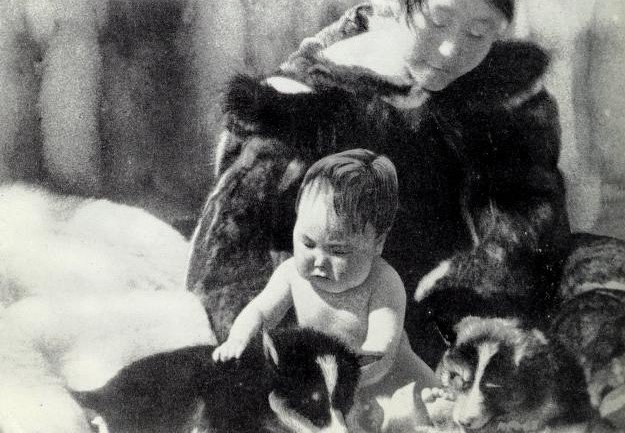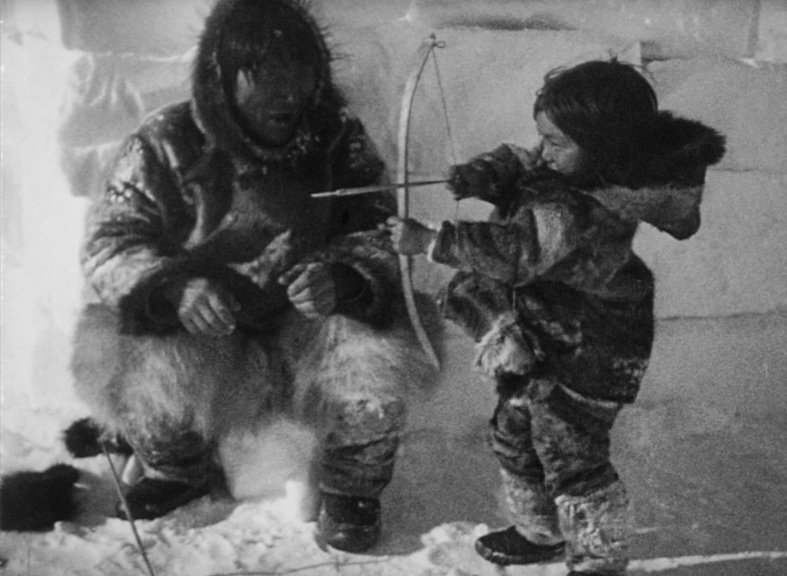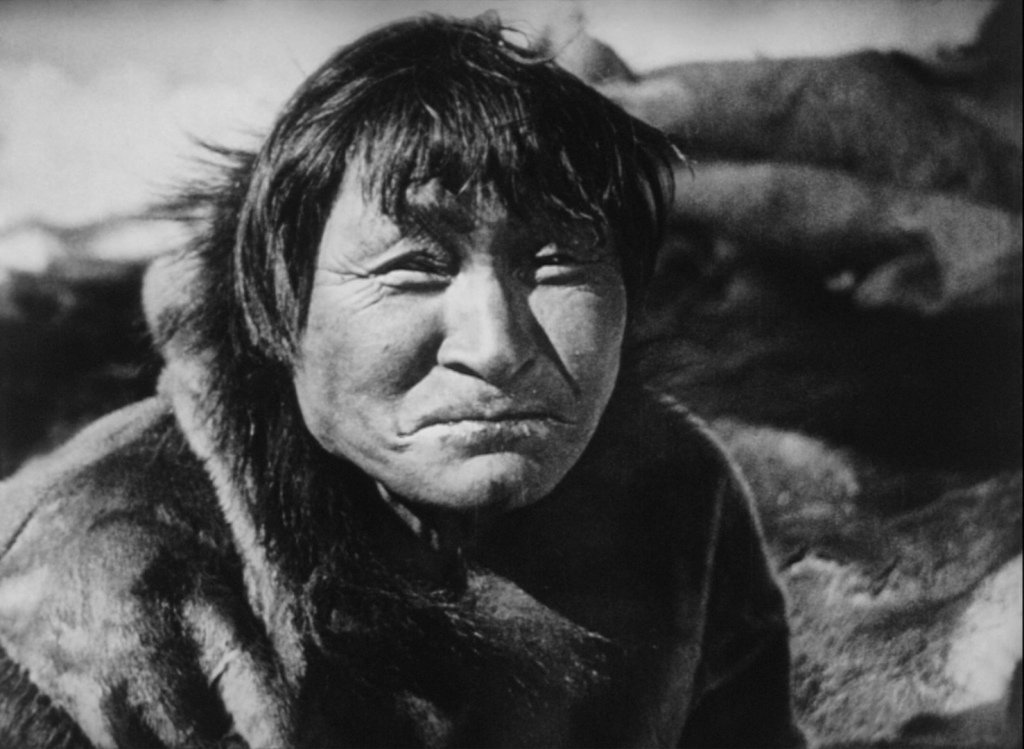The complicated legacy of D.W. Griffith’s Birth of a Nation (1915) is very well known to any cinephile: it showcased the colossal possibilities of the cinematic medium and yet narrated a story replete with appalling racist propaganda. The hidden truths and manipulation that went behind the making of Robert J. Flaherty’s path-breaking Nanook of the North (1922) also speak of this proto-documentary’s complicated legacy. Of course, I acknowledge that Flaherty’s artfully shot, the quasi-compassionate ethnographic film couldn’t be compared with the nauseatingly despicable portrayal of African-Americans in Griffith’s feature. But the more we dig into the story behind Nanook, the more complicated the truth gets and puts forth this perennially asked question: how real a documentary really is?
We have to remember that Flaherty made Nanook of the North at a time when there was no distinction between narrative cinema and documentary, and even before the time the term ‘documentary’ came into existence. Roger Ebert writes, “I did not much care about the purity of Flaherty’s methods. He shot his footage in 1920, when there were no rules for documentaries.” [1] In the later era, we had cinema verite (inspired by Dziga Vertov’s works) which came as close as possible to film the reality of a person rather than asking the ‘real’ subject to ‘perform’ in front of the camera.

Nanook of the North is certainly a film full of contradictions – especially the way it underplays the social, cultural complexities of a culture even while trying to celebrate a way of life on the verge of obliteration. But being a first of its kind, the flaws have also taught a lot to the documentarians of later period. Moreover, Flaherty’s craftsmanship flawlessly showcases the warmth and resilience of humanity in a way that’s still unparalleled in cinema. Who can forget that spellbinding igloo-building sequence or the moment Nyla’s naked baby plays with the puppies?
Related to Nanook of the North: The Eagle Huntress [2016] – A Feel-Good Documentary Led by an Incredibly Charismatic Girl
Robert Joseph Flaherty (1884-1951), the explorer and still photographer from Michigan, was the son of a mining prospector. He loved traveling through the North American wilderness, and over the years developed contact with the region’s Eskimo (Inuit) people. In 1910, Canadian entrepreneur and railway contractor, William Mackenzie commissioned Flaherty for an expedition to the East Coast of Hudson Bay in order to examine the mineral deposits. Flaherty made four expeditions to the area in the next six years. Meanwhile, in 1913 Flaherty’s wife and lifelong collaborator, Frances encouraged him to buy a motion-picture camera. After taking operation courses in New York, Flaherty took his camera to film the Inuit.
On June 1920, Flaherty made the trip (with 75,000 feet of film) to start shooting his film which gradually became a trailblazing ethnographic documentary, chronicling the everyday lives of Eskimos. The camera weighed around 60 pounds and the tripod was 15 pounds. All this Flaherty’s crew took across the frozen landscapes and floes [2]. The year-long expedition was supposedly funded by fur trapper Thierry Mallet. Flaherty first shot the walrus hunt sequence and screened the footage to the Inuit (in a makeshift lab). He describes that the fame of the footage spread throughout the Inuit country, and consequently the locals started actively participating in his project [3].
Nanook of the North opens with introducing us the ‘happy-go-lucky’ eponymous character and his alleged family: young smiling wife, Nyla and three healthy kids. Flaherty goes on to faithfully illustrate the exhilaration as well as the hardships involved in existing among the snowlands of Arctic. Although many travelogues are made before Flaherty’s time, Nanook of the North perfectly demonstrates human beings eternal conflict with the natural elements. Hence, the film calls to our attention one of the perpetually visualized conflicts in cinema: Man Vs Nature. Some of the Inuit people’s domestic life duties include burning the moss for fuel, covering the Kayaks with seal-skins, making knives out of walrus ivory, keeping the seal-skin waterproof boots in good shape, etc. Amidst the grinding work and hunger, the Eskimos however don’t forget to care for and play with their adorable children.
Robert Flaherty creates more dramatic impact through the hunting scenes (seal and walrus). Though scripted (or faked) the idea here is to show a way of life as it is (was). There’s an undeniable dynamism to the flow of images in these scenes that was conceived before the Soviet film revolution of the mid-1920s. In fact, Sergei Eisenstein heralded the juxtaposition and linkage of images in Nanook of the North which powerfully creates a tension as well as the emotional connection. As the Criterion essay indicates, the walrus-hunting or igloo-building scenes does more than capturing the routine labor of Eskimos; it captures the beauty and warmth in the actions, or more importantly incorporates a unique human dimension [4]. It was purely exciting the moment Nanook makes a rectangular ice-window for the igloo, closing the chinks with snow and uses a snow block to reflect the light through the translucent window.

In The Story of Film, author Mark Cousins argues that the type of semi-staging employed in Nanook of the North was not without precedent [5]. In 1914, Christy Cabanne made the presumably lost ‘The Life of General Villa’ (produced by D.W. Griffith), in which authentic live footage of battles in Mexican Revolution was incorporated with semi-staged scenes. Yet, Flaherty uses such techniques to offer us a timeless theme and indisputable emotional impact. The film-maker was somewhat open about ‘casting’ the Inuit family to do deeds that were long obsolete (even in 1920), as he wanted to show, “the former majesty and character of these people before the white man destroys it”. That’s an interesting conflict as Flaherty desires to observe the unique culture of the Inuit, while also acknowledging how his ‘presence’ and filming would add to the rapid annihilation of the same culture.
Also, Read: Honeyland [2019] – An Exceptional and Unembellished Tale of a Woman’s Connection with Nature
From casting photogenic Inuit people as the ‘Nanook family’ to capturing the harpoon hunting tactics (the Inuit by this time have exchanged harpoons for rifles), there’s lot of inauthentic elements in this proto-documentary (the seal Nanook fights with was actually dead). But those who have deeply studied Flaherty’s life reveal more fascinating details. For instance, Nyla, the smiling wife of Nanook, was known as Alice Nevalinga, who was actually romantically involved with Flaherty and had a son with him (Joseph Flaherty). It was also established that Flaherty had other Inuit female ‘companions’ in his voyages across the Arctic. Of course, such details have nothing to do with Flaherty’s vital contribution to the history of cinema, but it’s intriguing to see how deeply the film-maker was involved with the Inuit community although his somewhat flattened portrayal of them is simply that of a Western outsider.
Eventually, it should be remembered that Nanook of the North was completely made for the Western audience. Ice-cream bars were named after Nanook, the indigenous Inuit culture became a product, and books centered on ‘Far North’ were sold like hot cakes in the bookstores. This was pre-Disney, pre-Star Wars days of movie-driven merchandising. Two years after the film was completed, Allakariallak (original name of Nanook) was said to have died of starvation while hunting in the desolate interiors of Northern Quebec. The news made headlines all across the Western nations. But this was again countered as one of Flaherty’s exaggerations because Allakariallak most probably died of tuberculosis at his home.
In later years, Flaherty was considerably more open about his ‘documentaries’ that were actually ethno fiction, the most important among his later works were Man of Aran (1934) and The Louisiana Story (1948). In recent years, we have experienced films like Atanarjuat (2001), The Story of the Weeping Camel (2003), The Cave of the Yellow Dog (2005); ethnographic movies that blurred the line between documentary and fiction. But most importantly this new wave of ethnographic cinema profoundly examines the cultural, social aspect of indigenous people (in the pre-modern as well as post-colonial times). Yet as an origin point to this particular type of movie-making and for challenging the ‘closed world’ mainstream film-making of that era, Nanook of the North occupies a formidable position in the history of cinema.
Notes:
- Roger Ebert, ‘Nanook the North Review: Great Movie’, rogerebert.com (September 25, 2005).
- A New History of Documentary Film, Betsy A. McLane, published April 2012.
- Robert J. Flaherty, “How I Filmed Nanook of the North“, documentary.org; originally published in The World’s Work, in October 1922
- Dean W. Duncan, Criterion Essay, January 11, 1999.
- The Story of Film, Mark Cousins, Pavillion Books, published September 2006.


